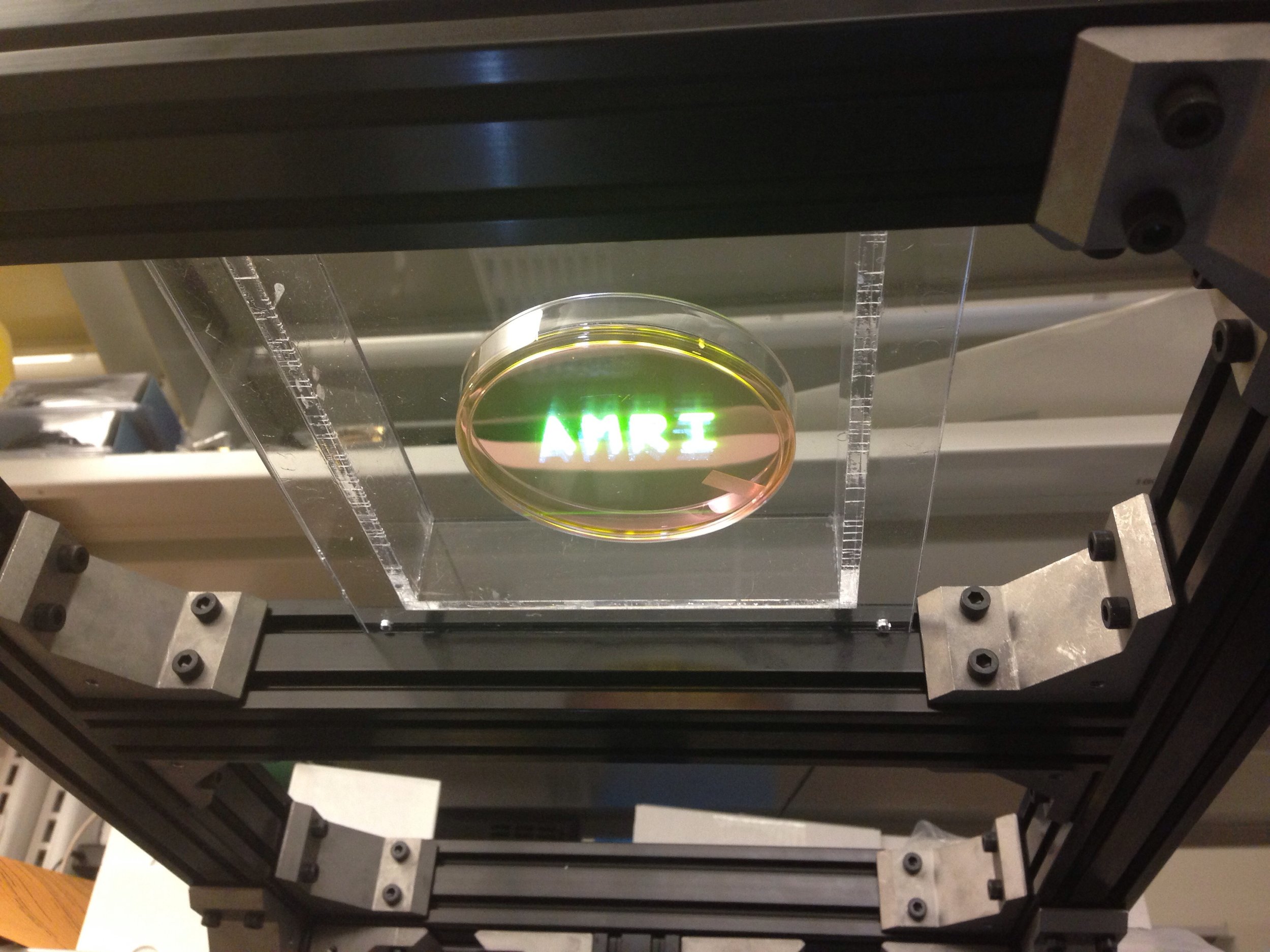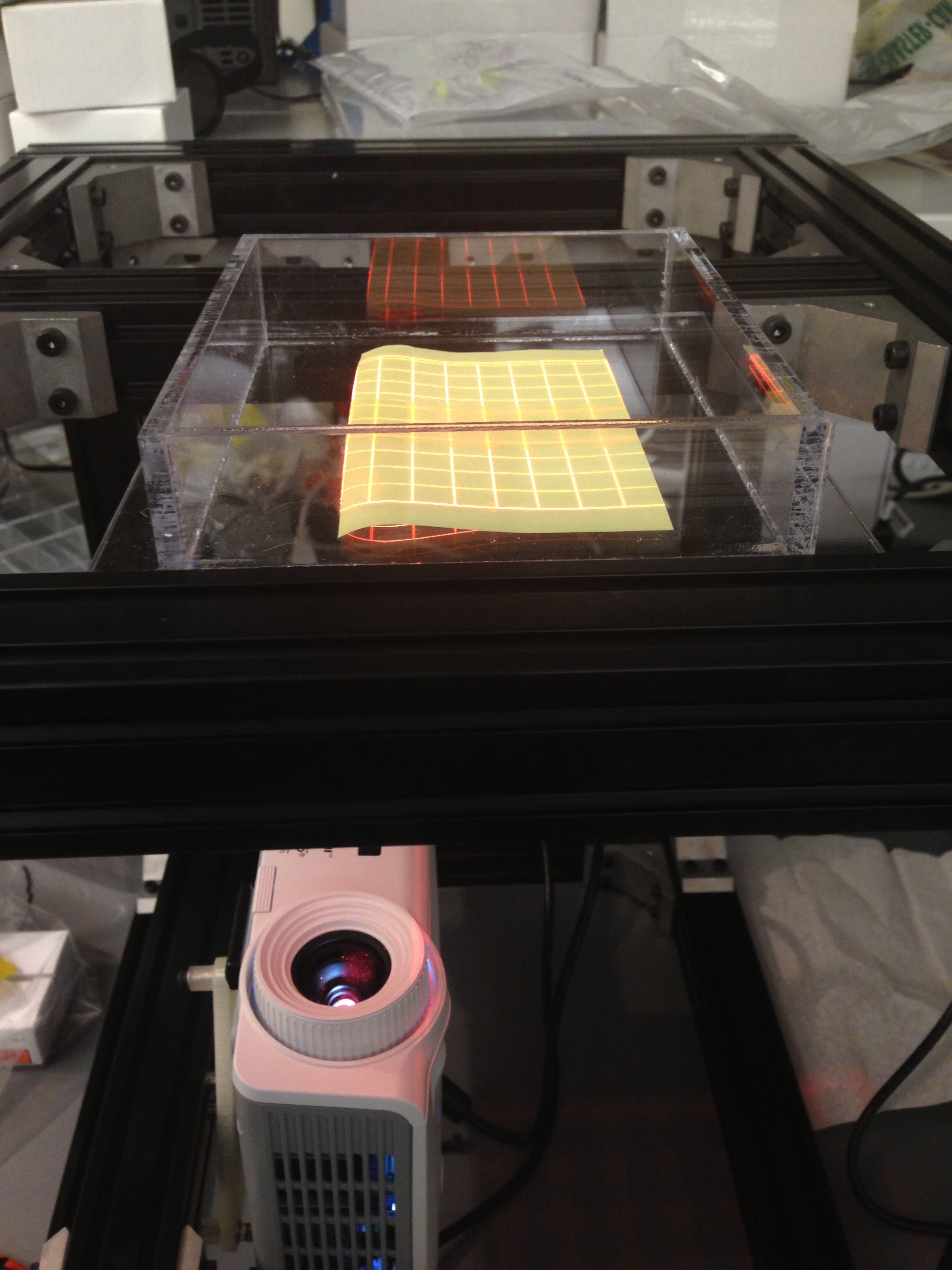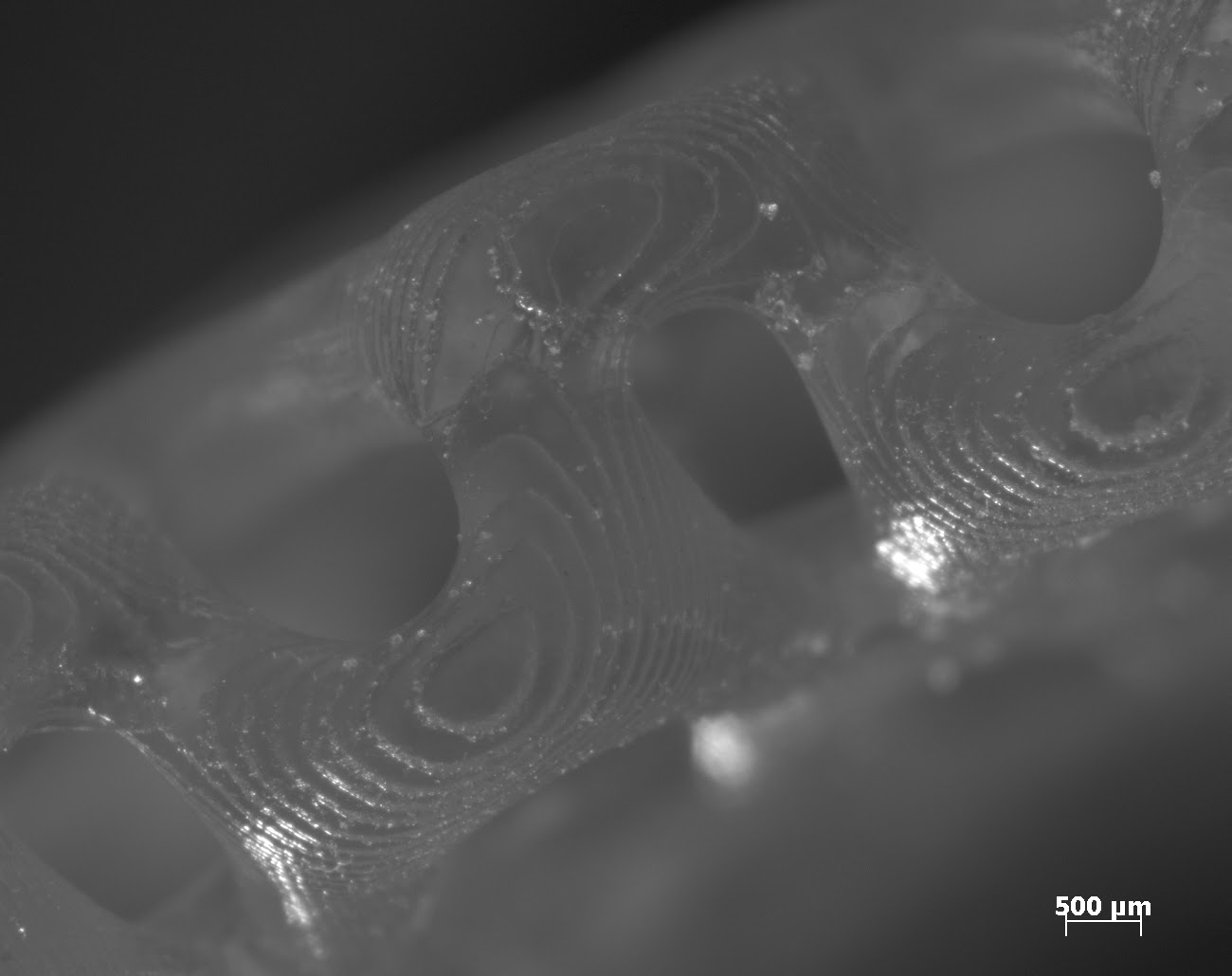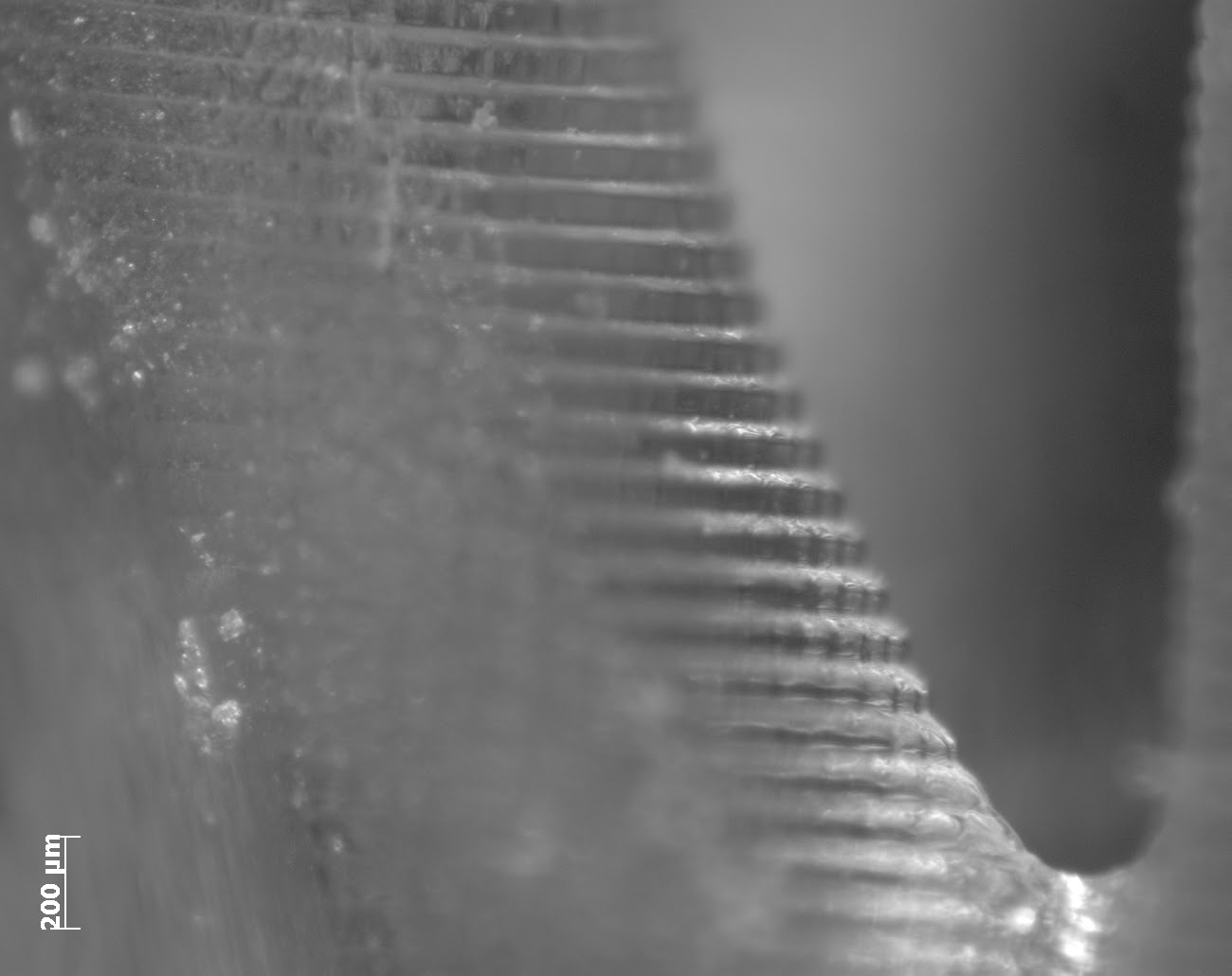Overview
During Summer '13 I was invited to be a fellow at the Advanced Manufacturing Research Institute (AMRI) at Rice University where I worked on Digital Light Projection (DLP) Photolithography of Plastics and Hydrogels.
Using commercially available photopolymers (most of which were acrylates at the time) I designed, built and began to characterize the printing process. With the foundational knowledge of the process, one could then look into materials that would fit the process but also have features like biocompatability or biodegradability for applications in regenerative medicine/tissue engineering.
This work would continue long after AMRI and is now a core component to the thesis for Bagrat Grigoryan's PhD.
Program Concept and Formation
This program was developed by Professor Jordan Miller to bridge the gap that he saw between the scientific and maker community. He saw that there were a growing number of makers that had skill sets that were being "overlooked" since they did not come from the traditional science backgrounds.
Jordan and I spoke, I had been curious about exploring alternative printing methods outside the realm of FDM/FFF. I proposed looking at stereolithography (SLA), in particular the DLP based process. Unlike the traditional laser based systems, the DLP approach was faster and capable of more details. I could learn more about the process/technology, and he saw some possible applications specific to his research in the world of Regenerative Medicine/Tissue Engineering. My proposal was approved, and the scheming was underway!
DLP Machine Design & Build
Rough CAD render of DLP printer in Rhinoceros
A SLA/DLP based printer is fairly simple compared to a FDM/FFF based printer. The main axis of motion is the Z axis, the XY axes are created via the projection are from the projector.
I decided to use Misumi aluminum extrusions to build the structure of the machine and used an off the shelf projector (had to make sure it had a mercury bulb inside for UV content though!).
In terms of driving everything, building off of my familiarity with Arduino based controllers, I opted to go with an Ultimachine RAMBo board. I only needed a single axis, but having the extras will leave room for future improvements (e.g. peel/slide mechanism to help with separation forces).
Frame all built! (Also having some fun with a label maker :) )
The transition to Bio
Brainstorming the transition to biocompatible materials.
After spending sometime printing with commercially available resins, I was comfortable with the results I was getting. Now it was time to apply what I've observed and start thinking of how to transition to bio-compatible materials. This is where the most unique aspect of AMRI was, where else could I sit down with a thought leader in a field and together figure out how to best apply this tool I had just made. We hit the whiteboard and Jordan brought me up to speed with what he was thinking in regards to materials we could photopolymerize, this is where I got a crash course on hydrogels.
At this same time, Jordan was also getting his first round of grad students. This is where Bagrat Grigoryan entered the picture. Again, the collaboration between multiple disciplines is what makes AMRI so unique, I found myself delighted to be in the presence of yet another content expert with an interest in this tool I had just made. We hacked and we experimented...and eventually we got some results!
Testing materials with a photo rheometer
First Hydrogel print! It works!
Future
At the end of the program I returned to dFab at MICA, only to then be recruited back to Miller Lab to be Lab Manager/Researcher. Having spent more time thinking about the DLP system, first thing I wanted to address was the size. The machine I had made at AMRI was a monstrosity, given what we were hoping to






















